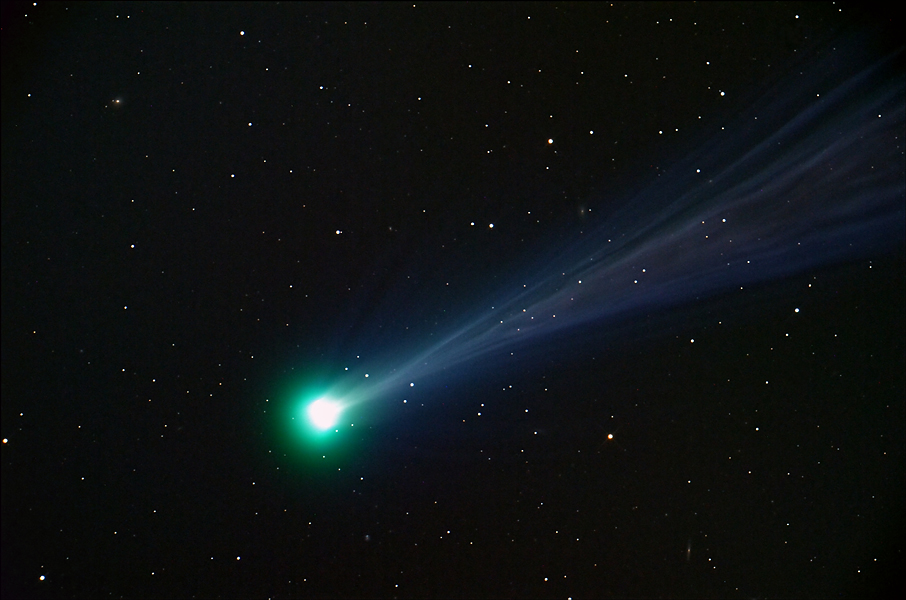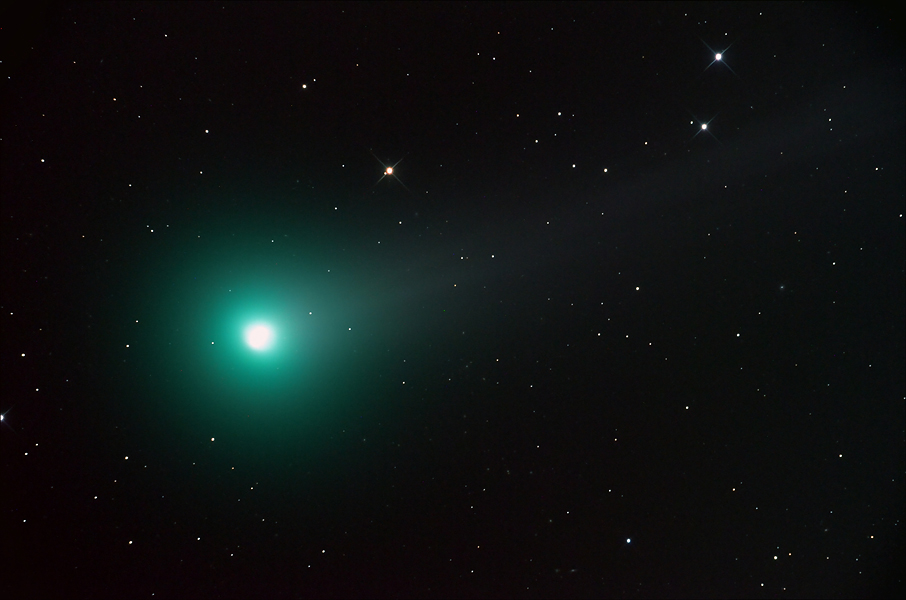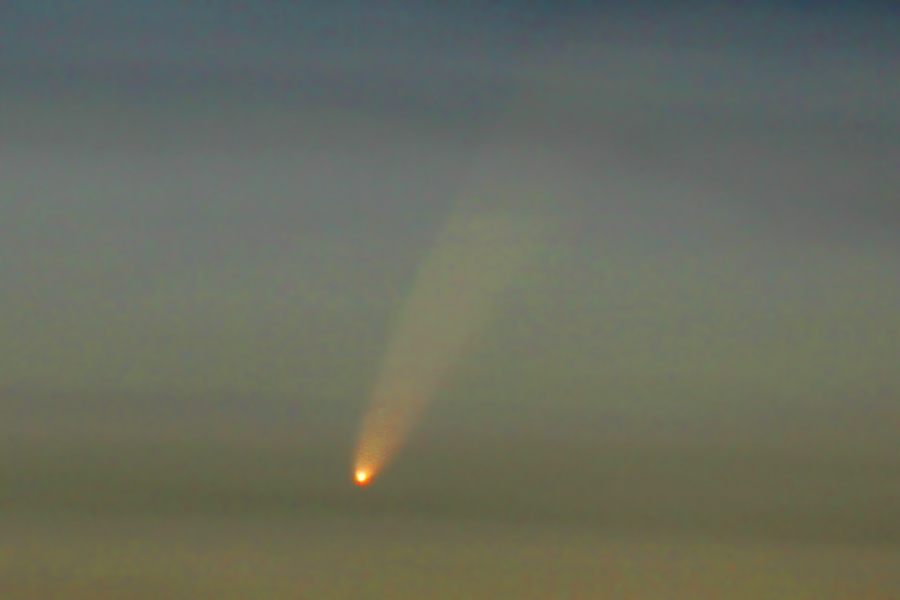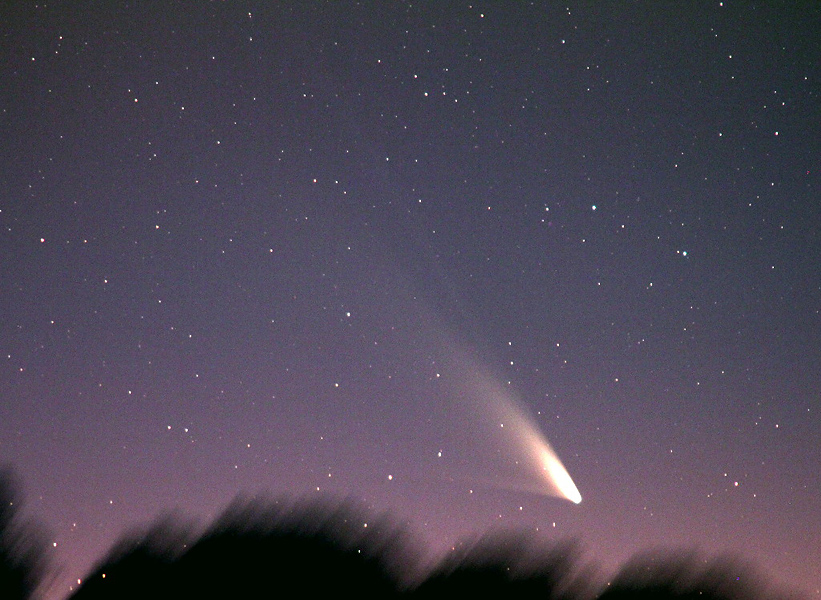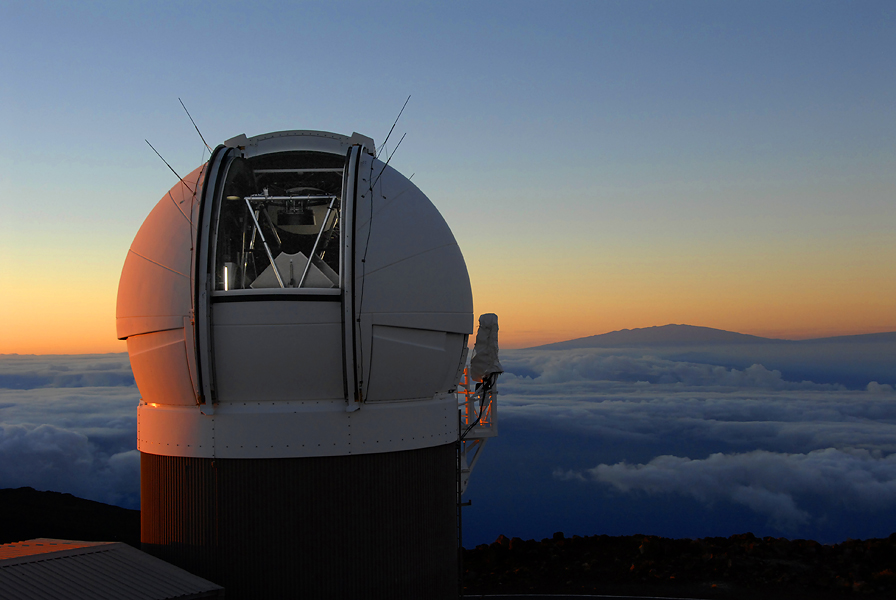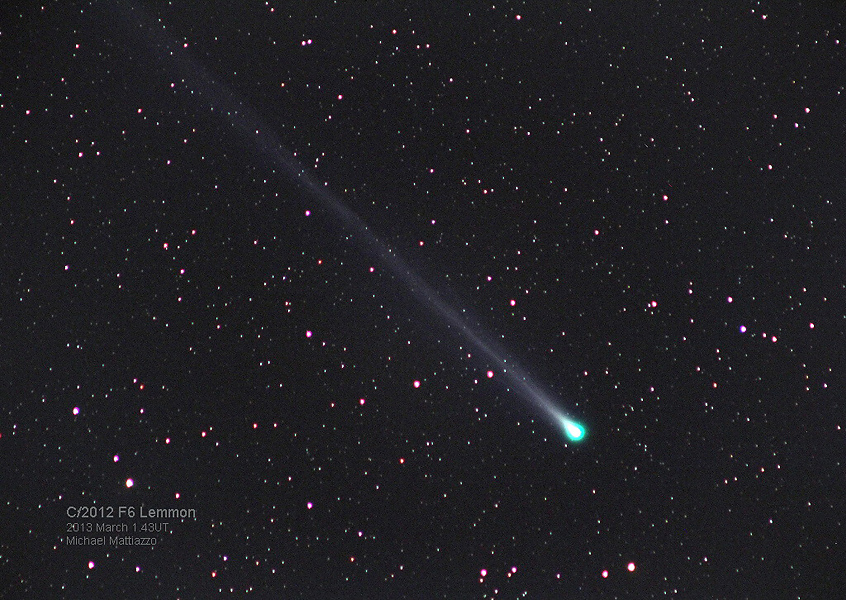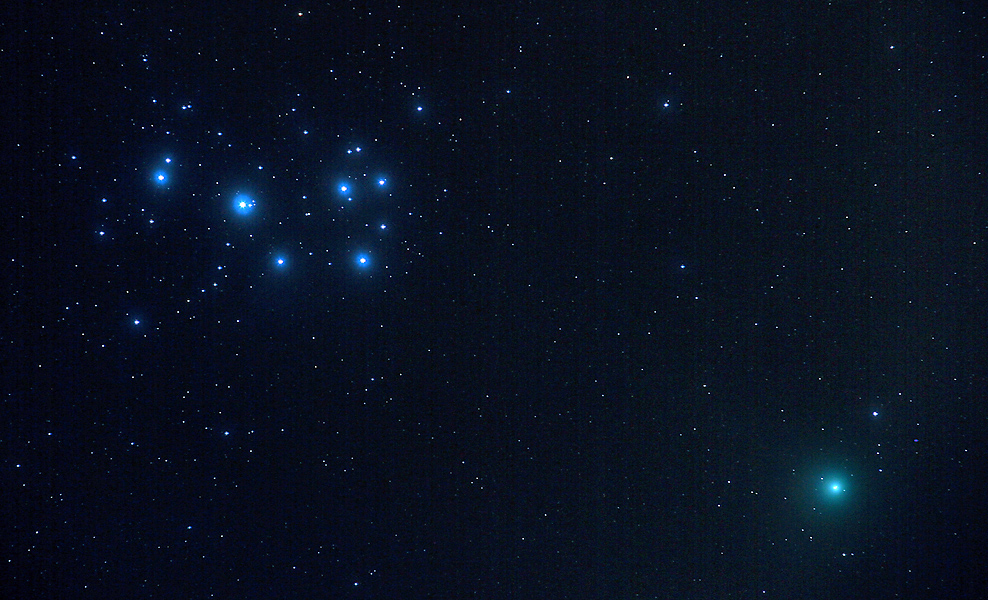How to Photograph Comet ISON: A Photo Guide (Gallery)
Sunward Bound Comet ISON
Comet ISON is a much-anticipated comet making a close sun flyby on Nov. 28, 2013. The comet was discovered in Sept. 2012 by amateur astronomers and tracked closely because of its potential to flare up in a "comet of the century." As of mid-November, the comet reached naked-eye visibility, but there's a trick to photographing the object. Veteran space photographers Imelda Joson and Edwin Aguirre outline how to photograph Comet ISON here.
This stunning portrait of Comet ISON, officially designated as C/2012 S1, was captured by John Nassr on Nov. 15 from his Stardust Observatory in Baguio City in the Philippines. Nassr used a Nikon D7000 digital SLR camera coupled to his custom-built 16-inch f/4.5 Newtonian reflector to record the sungrazing comet’s intricate tail. The image is a combination of five 1-minute-long exposures at ISO 6400. [Read the Full Story: How to Photograph Comet ISON]
Comet ISON in Outburst
On Nov. 14, Comet ISON suddenly underwent rapid brightening, eventually making the object visible to the unaided eye for observers in dark-sky sites. This pair of images shows the dramatic change in the comet’s appearance and brightness. John Nassr obtained the image at left on November 5, just nine days before the outburst; the image at right shows what the comet looked like a day after the outburst. Nassr used his Nikon D7000 DSLR camera and 16-inch Newtonian reflector at his Stardust Observatory in Baguio City, Philippines, for both shots. [Read the Full Story: How to Photograph Comet ISON]
Comet Lovejoy Shares the Dawn Sky
While Comet ISON is getting most of the media attention, another cosmic visitor has also reached naked-eye visibility in the dawn sky — Comet Lovejoy, C/2013 R1. Discovered by Australian comet hunter Terry Lovejoy in September, the comet will reach perihelion (closest distance to the sun) on Dec. 22. John Nassr captured this view of Comet Lovejoy on the morning of Nov. 15, using his 16-inch Newtonian reflector and Nikon D7000 camera. Like ISON, Lovejoy’s strong greenish glow is mainly due to light emitted by cyanogen (CN) and diatomic carbon (C2) in the comet’s atmosphere, or coma, as they are exposed to the sun’s ultraviolet radiation. [Read the Full Story: How to Photograph Comet ISON]
Comet McNaught in 2007
Bright comets are relatively easy to photograph even with a simple setup — all you need is a digital SLR camera mounted on a sturdy tripod. This 1-second shot of Comet McNaught, C/2006 P1, was taken at dusk on Jan. 10, 2007 by Imelda Joson and Edwin Aguirre from the suburbs of Boston using a tripod-mounted Canon EOS 20D camera and 135-mm lens at ISO 800. [Read the Full Story: How to Photograph Comet ISON]
Basic Camera Setup
Imelda Joson and Edwin Aguirre’s basic sky-photography setup consists of a ball-head-mounted Canon EOS 20D DSLR camera with a 28–135-mm zoom lens, an interval timer/remote controller (bottom), a bubble level on the flash’s hot shoe, and a right-angle 2.5x magnifier for the viewfinder. In addition to comets, such a setup can be used to photograph star trails, conjunctions, constellations, meteor showers, auroras and the Milky Way. [Read the Full Story: How to Photograph Comet ISON]
Comet McNaught at Dusk
One advantage of using a DSLR camera for comet photography as opposed to a compact point-and-shoot camera is that you can change your lens to match your subject. Imelda Joson and Edwin Aguirre swapped the lens on their Canon EOS 20D DSLR camera with a 400-mm telephoto to obtain this quick, close-up shot of Comet McNaught, C/2006 P1, after sunset on January 11, 2007, as it headed toward perihelion. [Read the Full Story: How to Photograph Comet ISON]
Comet Pan-STARRS in March 2013
If you want to capture detailed shots of the comet and record the full extent of its tail, you will need to use a zoom or telephoto lens mounted on a portable tracking head or a telescope with a motor-driven equatorial mount. These platforms will help keep the comet centered in the camera’s field of view, allowing you to take longer exposures. This 3-minute tracked exposure of Comet Pan-STARRS, C/2011 L4, was taken by Australian astrophotographer Michael Mattiazzo on March 1, 2013. He used a Canon EOS 60Da DSLR camera and a zoom lens set at 200 mm. [Read the Full Story: How to Photograph Comet ISON]
Breaking space news, the latest updates on rocket launches, skywatching events and more!
Pan-STARRS Telescope in Hawaii
Comets are typically named after the observers who first found them. But in the case of comets ISON and Pan-STARRS, the objects are named after the sky-survey programs that discovered them. ISON stands for the International Scientific Optical Network, while Pan-STARRS stands for Panoramic Survey Telescope And Rapid Response System. Both programs are designed to detect and monitor objects in space that could potentially threaten Earth. This view taken by Rob Ratkowski shows the dome housing Pan-STARRS’s 1.8-meter PS1 telescope at Haleakala in Hawaii. The mountain in the distance is Mauna Kea. [Read the Full Story: How to Photograph Comet ISON]
A Green Comet Lemmon
The long, slender gas tail, or ion tail, of Comet Lemmon, C/2012 F6, is apparent in this 8-minute tracked exposure obtained by Michael Mattiazzo from Australia on March 1, 2013 using a Canon EOS 60Da DSLR camera and 300-mm zoom lens. The comet is named after the Mount Lemmon Survey program in Arizona. [Read the Full Story: How to Photograph Comet ISON]
A Green Comet and a Blue Star Cluster
On the night of Jan. 7, 2005, Imelda Joson and Edwin Aguirre captured this view of Comet Machholz, C/2004 Q2, at lower right, passing close to the Pleiades star cluster, also known as the “Seven Sisters” or M45, in Taurus. Joson and Aguirre used a Canon EOS 20D DSLR camera with a 200-mm f/2.8 zoom lens piggybacked to their Meade 8-inch Schmidt-Cassegrain telescope. [Read the Full Story: How to Photograph Comet ISON]
The 'Exploding' Comet Holmes in 2007
This sequence of images taken by Imelda Joson and Edwin Aguirre on Oct. 28, Nov. 2 and Nov. 6, 2007, shows the dramatic expansion of Comet 17P/Holmes in just nine days. Discovered by English amateur astronomer Edwin Holmes in 1892, the comet was a faint, run-of-the-mill object making its periodic return in 2007 when it suddenly underwent an “explosive” brightening, turning the comet into a 3rd-magnitude fuzz ball in the sky. Joson and Aguirre recorded the images using a Canon EOS 20D DSLR camera body attached to their Meade 8-inch f/10 Schmidt-Cassegrain telescope on a Takahashi EM-10 equatorial mount. The exposures were 30 seconds long at ISO 400 to 1600. [Read the Full Story: How to Photograph Comet ISON]
